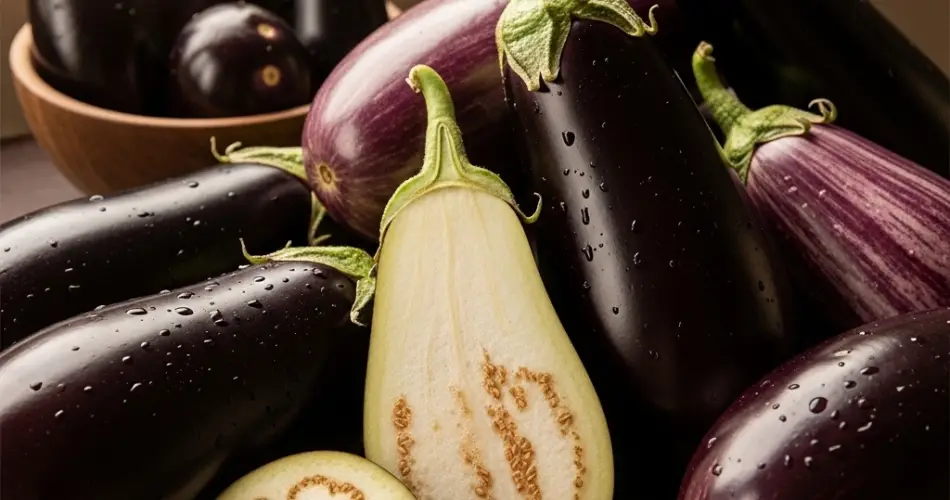Eggplants are a warm-season crop known for their glossy purple fruits, tender flesh, and ability to thrive in garden beds or containers. However, as the plants mature and begin producing heavy fruit, they can become unwieldy, floppy, or even break under their own weight. This is where staking or caging comes in.
If you’re wondering whether eggplants need support, the short answer is: yes, especially for larger varieties. Whether you choose to stake, cage, or use another method depends on your space, plant variety, and growing conditions. Here’s everything you need to know to decide the best support method for your eggplants.
Why Eggplants Need Support
Eggplants tend to grow upright but are naturally bushy and have brittle stems. As the fruits grow larger and heavier—especially the larger Italian or globe varieties—the branches may bend, droop, or snap. Wind and rain can also cause the plants to topple if unsupported.
Here’s why supporting eggplants is beneficial:
-
Prevents stem breakage from the weight of the fruit.
-
Keeps fruits off the ground, reducing the risk of rot and pests.
-
Improves air circulation, reducing the chance of fungal infections.
-
Makes harvesting easier, especially in compact or raised bed gardens.
Even smaller-fruited varieties like Japanese or Fairy Tale eggplants benefit from some form of support, though they may not require as robust a system as their larger cousins.
Staking Eggplants
Staking is one of the most straightforward and space-efficient ways to support eggplants. It involves tying the plant to a vertical pole or stick.
How to Stake:
-
Insert a sturdy stake (bamboo, wooden, or metal) 1–2 inches away from the main stem, at least 3–4 feet tall.
-
Use soft ties like garden twine, cloth strips, or plant tape to loosely secure the main stem to the stake.
-
Add ties as the plant grows, keeping the branches upright and balanced.
Staking is ideal for gardeners with limited space or container-grown eggplants. It works best with regular pruning to maintain a single or double stem, reducing the plant’s overall width.
Pros of Staking:
-
Space-saving and ideal for small gardens or containers.
-
Keeps the plant upright and tidy.
-
Makes harvesting simpler.
Cons:
-
Requires regular pruning and tying.
-
May not offer enough lateral support for very bushy plants.
Caging Eggplants
Caging uses a wire or metal structure that surrounds the plant, allowing it to grow naturally while still being supported on all sides. Tomato cages are often repurposed for this, or you can make your own using hardware mesh or fencing.
How to Cage:
-
Choose a strong cage at least 3 feet tall and wide enough to accommodate mature growth.
-
Place the cage around the seedling early, before it grows too large to fit.
-
As the plant grows, guide stems through the cage openings or tie them loosely to the frame if needed.
Caging allows the plant to maintain a more natural bush shape, which is especially useful for compact or ornamental varieties.
Pros of Caging:
-
No need for frequent pruning or tying.
-
Provides full support for the plant and fruits.
-
Allows for natural branching and higher yield in some varieties.
Cons:
-
Takes up more space than staking.
-
Can be harder to harvest from dense cages if the plant grows thickly.
Other Support Options
If you’re growing multiple eggplants in rows, a trellis system or string weave (similar to what’s used with tomatoes) can also work. This involves placing stakes at either end of a row and running twine horizontally to support the plants.
You can also use a combination of stake and cage: stake the central stem and allow side branches to rest against the cage for extra support.
When to Provide Support
Whether you choose to stake or cage, it’s important to set up your support early in the season, ideally when transplanting seedlings or when plants are about 6–8 inches tall. Adding supports later can damage roots or make it harder to train the plant.
Choosing Based on Your Needs
| Factor | Best Method |
|---|---|
| Small garden or container | Staking |
| Large, bushy varieties | Caging |
| Low maintenance | Caging |
| Regular pruning preferred | Staking |
| Multiple plants in rows | Trellis system |
Final Thoughts
Supporting your eggplants is a simple step that goes a long way in ensuring healthy growth and a larger, cleaner harvest. Whether you stake, cage, or combine both, the right support method will keep your plants upright, well-ventilated, and productive. Take into account your space, plant type, and gardening style, and choose the system that best supports both your plants and your routine.
With proper support, you’ll enjoy stronger plants, fewer broken branches, and a bumper crop of beautiful, healthy eggplants.



